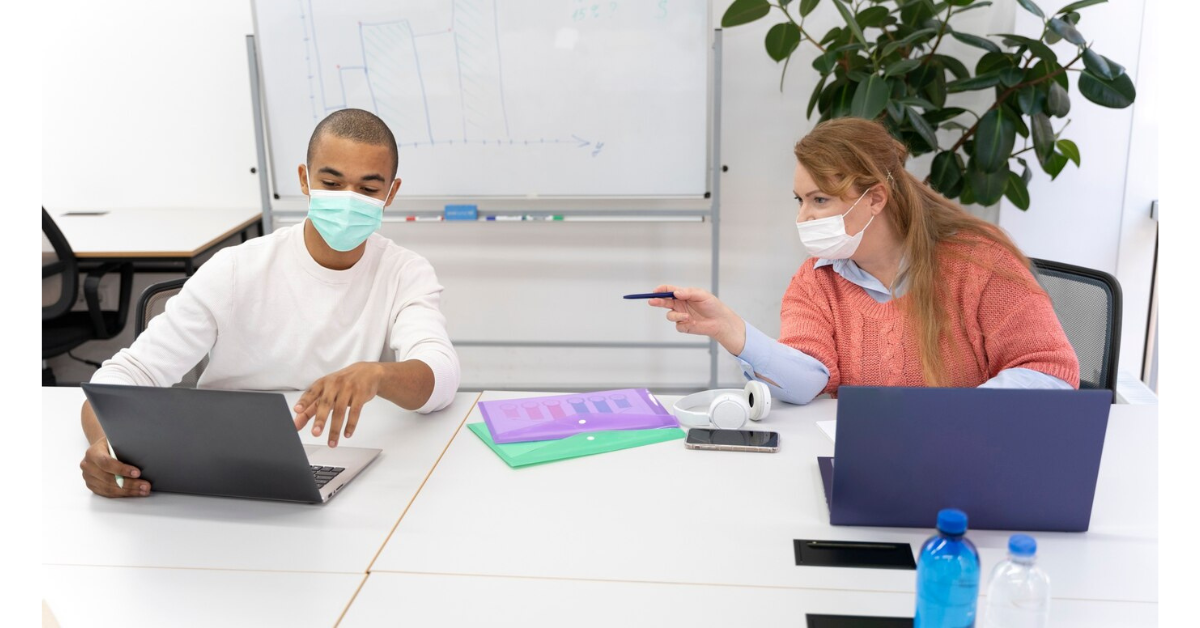In the fast-paced world of modern workplaces, health and safety training is crucial but often overlooked. The silver lining? Technology is transforming these programmes, making them more engaging and effective.
From virtual reality to mobile apps, here’s how tech revitalises health and safety training.
The Evolution of Health and Safety Training
Health and safety training has a storied history. It began with introductory lectures and handouts. Remember those tedious safety manuals? They were a chore. Thankfully, training methods have evolved significantly.
Initially, face-to-face training sessions were the norm. These sessions were often dry and failed to capture attention. Then came videos and interactive CDs, which were better but still left much to be desired. Fast forward to today and technology is reshaping the landscape. Training can now be immersive, interactive and even enjoyable.
Benefits of Technology in Training Programmes
Technology in training offers numerous benefits. Let’s dive deeper into a few:
- Engagement: Technology makes training more engaging. For instance, virtual reality can turn mundane safety drills into thrilling experiences. Instead of reading a manual, employees can navigate virtual environments, encountering and addressing hazards as they go. This active participation keeps learners engaged and improves retention.
- Accessibility: Online training modules can be accessed anytime, anywhere. This is a game-changer for remote workers or those with irregular schedules. Employees can complete a safety module from home or during their commute, making training more flexible and convenient.
- Customisation: Technology allows for training to be tailored to individual needs. Interactive platforms can assess a learner’s progress and adapt content accordingly. Employees can study at their own pace, revising challenging sections as needed, which leads to a more personalised and practical learning experience.
- Realistic Simulations: Virtual reality (VR) and augmented reality (AR) offer realistic simulations of workplace scenarios. Workers can practice responding to emergencies, handling machinery or navigating hazardous environments in a controlled, risk-free setting. This hands-on approach builds confidence and preparedness.
- Cost-Effective: Tech-based training can be more cost-effective over time. While the initial setup might be pricey, reducing physical materials and travel expenses can lead to significant savings. Plus, digital content can be updated easily, ensuring training materials remain current without the need for reprinting manuals.
- Tracking and Analytics: Technology enables employers to track progress and identify areas for improvement. Advanced analytics can provide insights into employees’ performance, highlighting strengths and weaknesses. This data-driven approach helps fine-tune the training programmes for maximum effectiveness.
Types of Technology Used in Health and Safety Training
Several technologies are revolutionising health and safety training. Let’s explore some:
- Virtual Reality (VR): VR provides immersive training experiences. Workers can navigate hazardous situations without real danger. Picture a construction worker practising safety protocols on a high-rise building, all within a virtual environment. It’s like a video game but with a serious purpose.
- Augmented Reality (AR): AR overlays digital information onto the real world. It’s perfect for on-the-job training. Imagine a technician looking at a complex piece of machinery and seeing step-by-step repair instructions appear before their eyes. AR can guide them through processes, ensuring accuracy and efficiency.
- E-Learning Platforms: These are comprehensive online courses accessible anytime, anywhere. They often include videos, quizzes and interactive modules. Platforms like Coursera or Udemy offer courses tailored to specific industries, providing a flexible and engaging learning experience.
- Mobile Apps: Training apps offer unparalleled convenience. Employees can learn on the go, whether commuting or waiting in line for coffee. These apps often include bite-sized lessons, quizzes and even gamified elements to keep users engaged.
- Wearable Technology: Wearable devices can monitor health metrics like heart rate and stress levels. In a high-stress work environment, these devices can alert workers to take breaks, preventing accidents caused by fatigue or overexertion.
- Gamification: This involves applying game-design elements to training. Points, badges and leaderboards transform mundane training into an exciting challenge. Employees can compete with each other, which boosts engagement and motivation.
Implementing Technology in Existing Training Programmes
Integrating technology into existing training programmes can enhance their effectiveness. Here’s how to do it for various types of training:
General Health and Safety Training:
The availability of general health and safety training online has made it easy to implement. Start with a small group to test new modules and gather feedback. Train the trainers in the latest technology, roll out the modules gradually and use analytics to track progress and update content regularly.
First Aid at Work:
Gather feedback on current training effectiveness. Use Virtual Reality (VR) for realistic first-aid simulations. Implement a VR pilot programmes and collect feedback. Ensure trainers are proficient in VR and introduce VR sessions gradually alongside traditional training. Monitor performance and refine the training based on feedback.
Fire Safety Training:
Evaluate current engagement and confidence in fire safety drills. Augmented Reality (AR) can overlay digital fire scenarios during drills. Conduct a pilot AR-enhanced drill and gather feedback. Train the trainers in AR, introduce AR drills gradually and evaluate effectiveness through feedback and metrics.
Slips, Trips and Falls:
Assess the adequacy of current hazard prevention training. Wearable technology monitors movements and identifies risks. Pilot the use of wearables with a small group and track effectiveness. Train trainers to interpret wearable data, start in high-risk areas and use data to improve training and identify ongoing risks.
Manual Handling Training:
Adopt techniques and procedures from manual handling training courses and implement VR for safe lifting technique practice. Pilot VR training with a small group, gather feedback and ensure trainers are skilled in VR. Gradually integrate VR sessions and track injury reduction to refine the training.
Conclusion
Technology is revolutionising health and safety training. It’s making it more engaging, accessible and effective. While there are challenges, the benefits are immense. Organisations can create safer and more efficient workplaces by carefully implementing the right tech. The future of health and safety training is bright and technology is leading the way.







